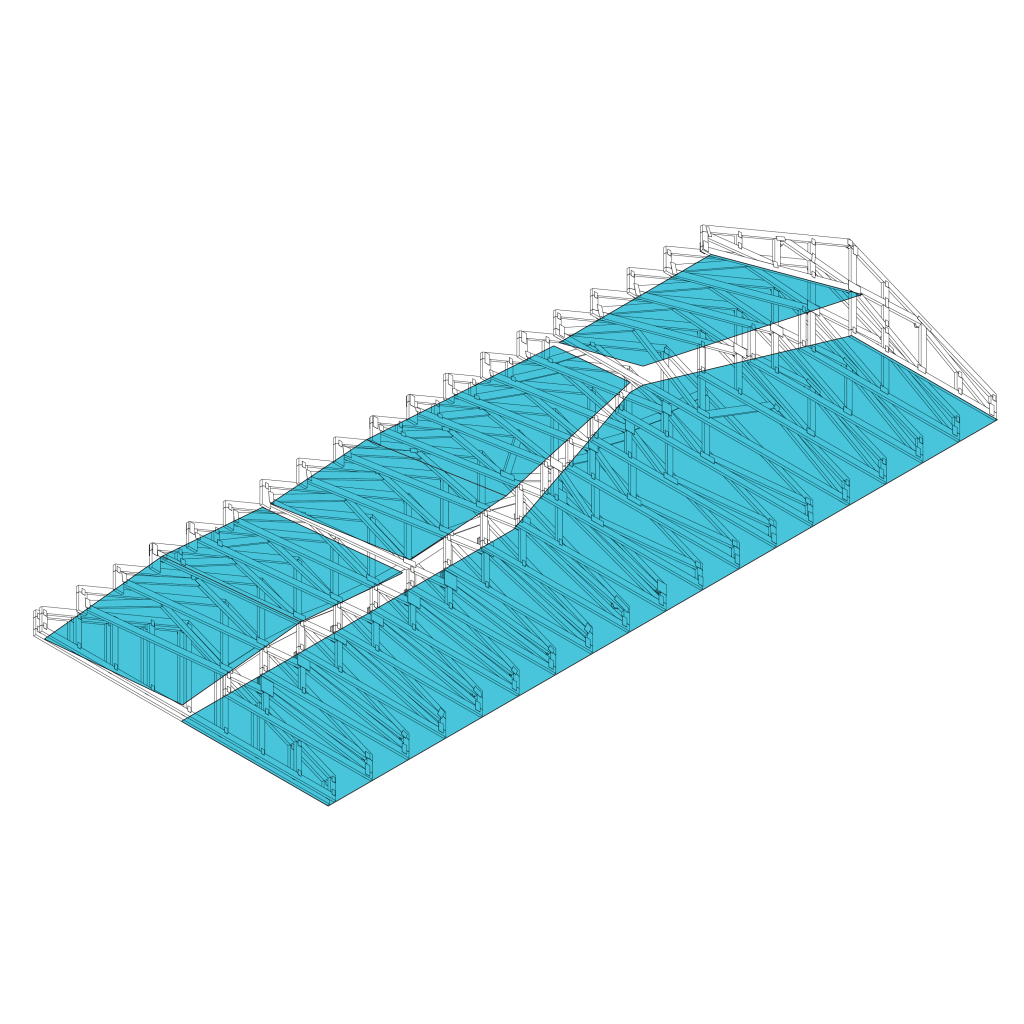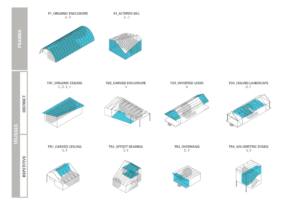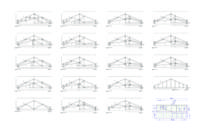AIA Innovation and Practice in House Design research grant
“Leveraging Existing Custom Fabrication Abilities in Small Affordable Houses” Session at the AIA Conference on Architecture (A’17) in Orlando
Much attention is currently given to the emerging potentials of digital fabrication technologies. Yet, powerful and proven custom fabrication abilities that draw on both digital and handcrafted methods have long existed in the construction industry. In the custom timber home industry digitally controlled saws and routers regularly produce precut kits for both heavy frame and mass timber houses. Even more commonly, wood truss manufacturers produce inexpensive custom trusses that rationalize complex geometries and structural loads providing framers with formworks that make multifaceted roofs easily constructible. Yet, sadly, these complex roofs rarely add significant spatial interest to the buildings they top. Geometric complexity is the enemy of affordable construction, a truth that often reduces this type to unimaginative boxes. This research sought to determine whether it is possible to apply existing custom fabrication abilities to the design of small, inexpensive, light wood framed houses as a method for unlocking opportunities for architectural expression and space making in the affordable housing market.
Through this research, funded by the AIA Innovation and Practice in House Design research grant, we met with timber frame and wood truss manufacturers to understand the parameters affecting cost, developed a series of design strategies, and conducted a case study experiment for affordable infill housing in a local neighborhood.
The case study employs a faceted ceiling design in which each roof truss has a different profile. We worked closely with a local manufacturer to establish an efficient workflow. During this process we discovered that the efficiency of truss manufacturing is highly dependent upon machinery and software. For example, machines equipped with automatic jigs would offer significant labor cost savings compared to those with manual jigs due to the time required to manually re-position for each distinct truss profile. Additionally, software plug-ins which allow direct file exchange between designer and manufacturer can eliminate cost on the truss design side. We attempted workflows with two truss manufacturers using different software affiliates and cost-compared a simple, repetitive truss design with our geometrically-complex version. The results of this research reveal that the progress toward affordable housing application is slow but hopeful. Inefficiencies in software, economies of scale, and unwillingness of large manufacturers to work on small projects hinder this technology from reaching projects of a smaller scale. However, in some localities and where strong design-manufacturer partnerships exist, it is worth the pursuit.
Learn more about this research on the blog trussesandframes.wordpress.com.



